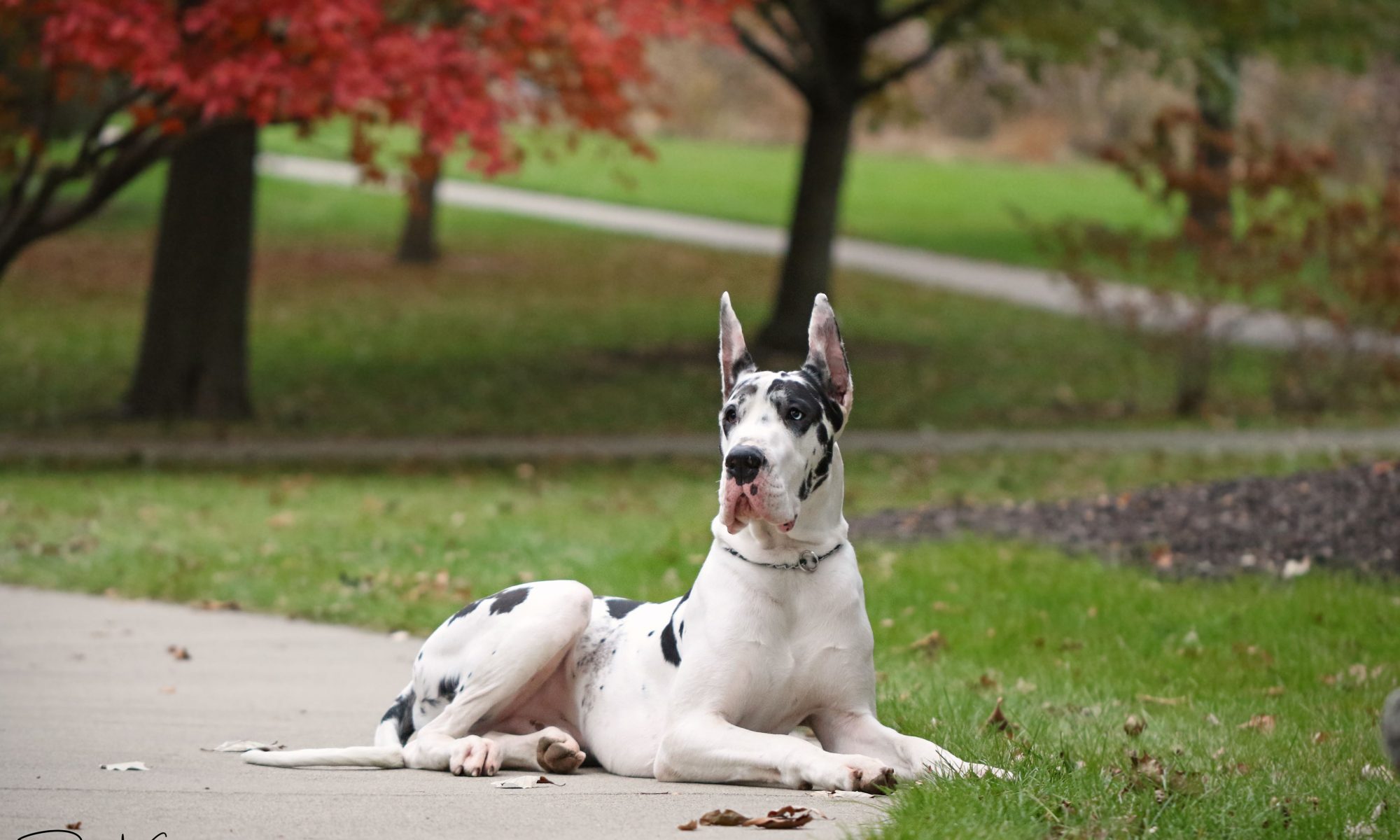Health tests are beyond a normal “well dog” vet visit – a simple vet check is not the same as having these documented tests. Health testing a dog prior to deciding to breed is the most powerful tool a breeder has to ensure healthy puppies.
Excuses of why not to do health tests are just that – EXCUSES. Claimed health tests of prior generations are usually hogwash (and conveniently difficult to verify!) and invalid to boot. Every breeding candidate needs to be tested.
** Potential puppy buyers should always verify a breeder’s claim of health testing – www.ofa.org. **
There are no perfect pedigrees. Every pedigree has issues. It’s how the breeder manages those issues, along with what the issues are and the severity of those issues.
Many breeds now are CHIC breeds. CHIC stands for Canine Health Information Center and it’s a centralized canine health database. Each breed can determine the tests most important before deciding to breed a dog. For Great Danes, the following tests must be performed in order to receive a CHIC number:
Hip Dysplasia – Results accepted from OFA, PennHIP, GDC, or OVC
Eyes – Results accepted from CERF
Congenital Cardiac Disease – Results accepted from OFA
Autoimmune Thyroid Disease – Results accepted from OFA
It is to be noted that the dog does not have to “pass” these tests in order to receive the number, however the owner has to be willing to share good and bad testing results. The CHIC number is not necessarily indicative of good health, rather the owner’s support of the open health database, which benefits our breed.
Why is an open health database (and health testing itself) so important? Even if a dog “fails” a health test, by allowing the information to be publicly available, owners of related dogs gain perspective when making their breeding choices. Having a health issue arise should not be a dirty little secret – only by sharing the test results can the breed move forward.
Health tests aren’t about getting the best rating, they’re about knowing what potential issues your dog may pass on to offspring and how to make smart breeding choices. The more information a breeder has – on the breeding candidate and their relatives – the more informed their breeding decisions.
Keep in mind that while a dog might not exhibit any signs of a health issue, they can still pass problems to offspring. They might be a carrier of the problem, not be exhibiting symptoms yet or even have a non-symptomatic level of the problem (and paired with the wrong breeding mates, the puppies could then be symptomatic).
The CHIC program has four main goals: to work with parent clubs in the definition of health issues for which a central information system should be established, to establish and maintain a central health information system in a form and manner that will support research into canine disease, to provide health information to owners and breeders, to base the availability on individually identified dogs on the consent of the owner, and to establish scientifically valid criteria for the acceptance of information into the database.
From a puppy buyer’s perspective, you’re stacking the odds in your favor by selecting a breeder that utilizes health testing on their breedings dogs (puppies are not tested).
Of course, whenever dealing with a living creature, there is no guarantee in life. Even the most diligent and responsible breeder can have things crop up – they simply can’t control everything. However, breeders nottesting are breeding with blinders on and gambling with the lives of the puppies produced.
These simple – non invasive (dogs do not need to be put under for any of these tests) – health tests can help a breeder decide how to breed a dog or if the dogs needs removed from a breeding program. This minimizes the chance of creating or passing along problems.
In a nutshell, testing is the best tool breeders have at reducing serious health issues.
